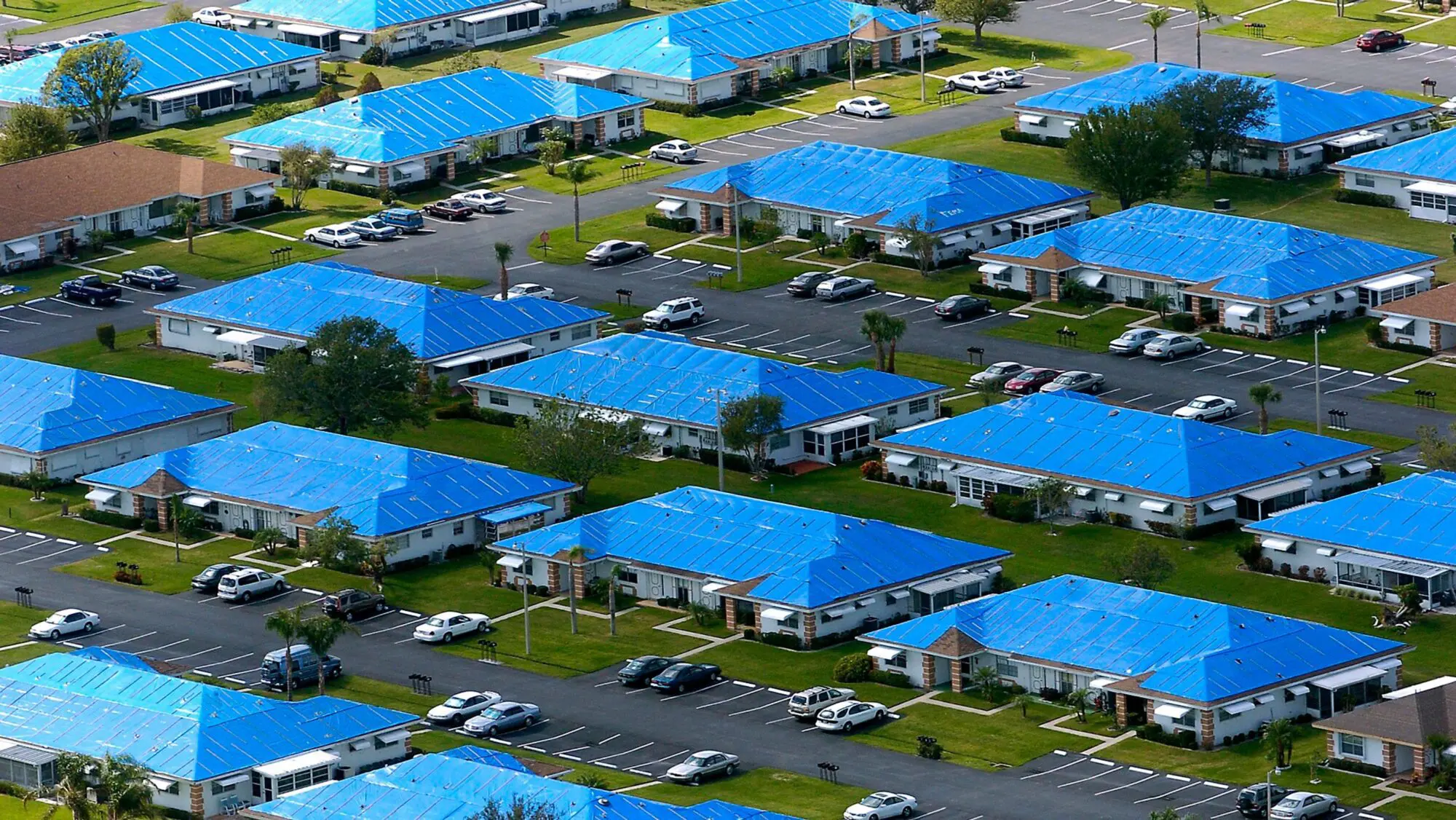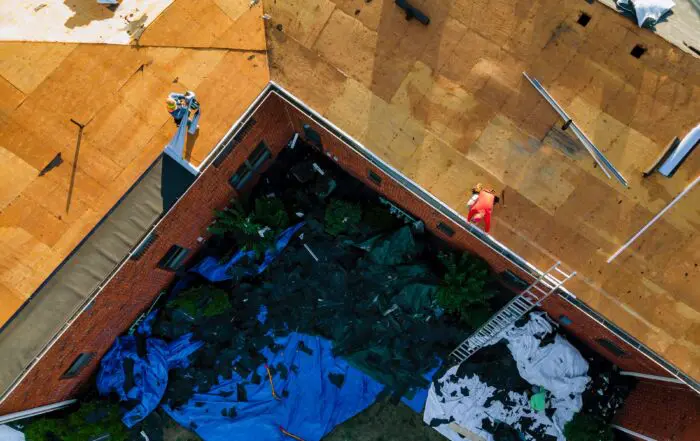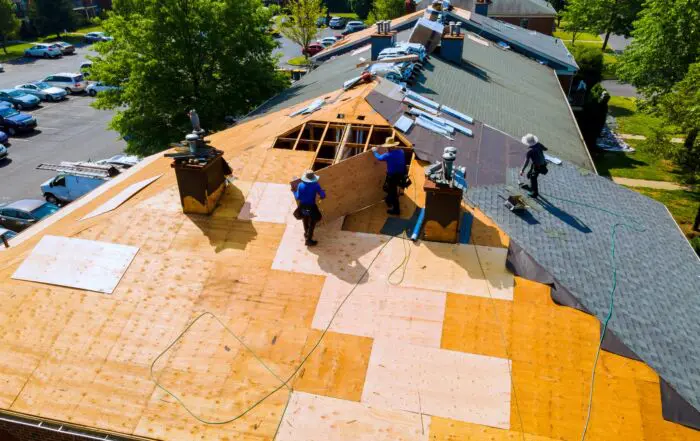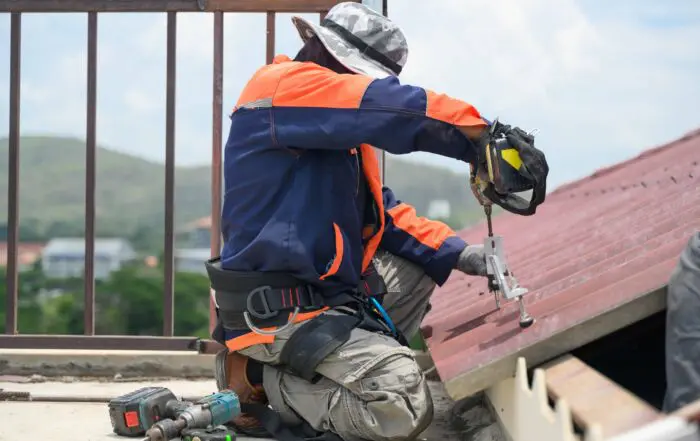
Date Posted:
April 11, 2019
Post Author:
Perkins Roofing Corp.
Categories:
Let’s talk about roof tarping, that dreaded blue eyesore you see on countless South Florida roofs, including maybe even your neighbor’s. Always ugly and never a smart choice for the health of your roof. Sure, they’re a temporary fix for a day or two until your trusted roofer can inspect your roof issue, but they’re never a good idea for longer than that, nor should they ever be treated as a long-term solution. We’re lookin’ at you, neighbor across the street who’s had a tarp since Hurricane Irma in 2017! Now let’s dive into the facts about roof tarps and why they don’t work as a roof leak solution.
What Is Roof Tarping?
Roof tarps are typically made of a woven UV-resistant poly-blend ranging in thickness and size and can be found at your local hardware and home improvement stores. “Blue roofs”, as they’re known by public emergency agencies, claim to be mildew resistant although we beg to differ. Due to their easy accessibility and fairly low costs, many homeowners seek to install them themselves or with the help of a handyman after noticing a roof leak in their home. The thought process makes sense:
- You discover a leak in your roof, causing water damage inside your house.
- You rush out to buy a tarp, assuming it’ll act as a quick fix to prevent further water damage.
However, what many homeowners don’t realize is that roof tarping is a temporary solution that can actually cause more damage to the roof itself in the long run.
If Roof Tarps Are So Bad, Then Why Does Everyone Get Them?
Monkey see, monkey do! The heinous blue roof tarps like to make their grand debut usually after a hurricane or other large weather pattern blows through town. Before you know it, the whole neighborhood is sporting a “blue roof”. As mentioned above, tarping your roof causes more problems than it would prevent. The biggest factor that weakens shingles or tile roofs is drastic temperature shifts. Shingles, in particular, will expand and contract, which in turn causes them to crack, allowing for water penetration. When a roof tarp is covering your roof, it isn’t able to “breathe” and access air flow as it normally would. Also, if the tarp isn’t installed perfectly smooth, it may potentially hold small pools of standing water. Not only is this a perfect scenario for mosquitoes to breed, but this can cause mold to grow underneath the tarp, and you may end up with greater roof damage and having to replace your roof anyway. But now the situation is messier and more hazardous.
Shreds of Truth
Roof tarps are not permanent solutions, nor are they suitable for a period of more than 30 days, as emphasized by the U.S. Department of Housing and Urban Development (HUD). In addition to causing more damage to your already leaking roof, tarps begin to deteriorate over time from the sun and rain, causing them to shred apart and litter your and your neighbor’s yard with debris.
A Smarter Choice for Emergency Roof Repairs
Smart roof maintenance and biannual roof inspections are always key in preventing desperate DIY roof fixes. We strongly advise you to never attempt to repair your damaged roof yourself. Schedule your roof’s pre-hurricane season inspection today! Perkins Roofing, your trusted roofing contractor between Jupiter and Miami in South Florida, recommends a roof inspection before and after hurricane season. Professional roof inspections are key to taking proper preventive measures for the health and longevity of your roof. Proactive maintenance saves you money and time in the future by preventing the need for unreliable and temporary roof repairs like roof tarping.
Call us anytime at (305) MIA-ROOF or email us at hello@perkinsroofing.net. We look forward to serving you!




